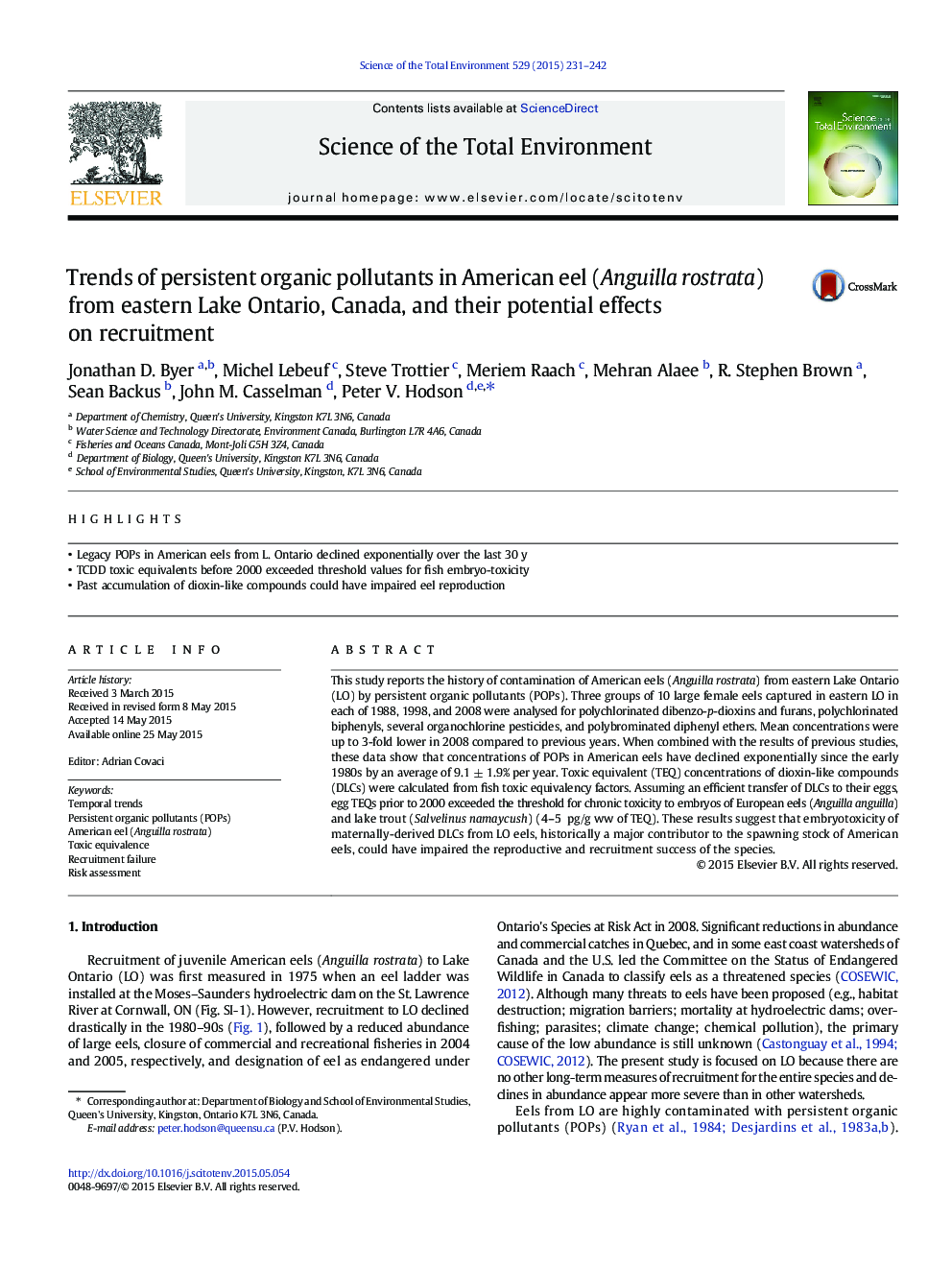| Article ID | Journal | Published Year | Pages | File Type |
|---|---|---|---|---|
| 6326395 | Science of The Total Environment | 2015 | 12 Pages |
â¢Legacy POPs in American eels from L. Ontario declined exponentially over the last 30 yâ¢TCDD toxic equivalents before 2000 exceeded threshold values for fish embryo-toxicityâ¢Past accumulation of dioxin-like compounds could have impaired eel reproduction
This study reports the history of contamination of American eels (Anguilla rostrata) from eastern Lake Ontario (LO) by persistent organic pollutants (POPs). Three groups of 10 large female eels captured in eastern LO in each of 1988, 1998, and 2008 were analysed for polychlorinated dibenzo-p-dioxins and furans, polychlorinated biphenyls, several organochlorine pesticides, and polybrominated diphenyl ethers. Mean concentrations were up to 3-fold lower in 2008 compared to previous years. When combined with the results of previous studies, these data show that concentrations of POPs in American eels have declined exponentially since the early 1980s by an average of 9.1 ± 1.9% per year. Toxic equivalent (TEQ) concentrations of dioxin-like compounds (DLCs) were calculated from fish toxic equivalency factors. Assuming an efficient transfer of DLCs to their eggs, egg TEQs prior to 2000 exceeded the threshold for chronic toxicity to embryos of European eels (Anguilla anguilla) and lake trout (Salvelinus namaycush) (4-5  pg/g ww of TEQ). These results suggest that embryotoxicity of maternally-derived DLCs from LO eels, historically a major contributor to the spawning stock of American eels, could have impaired the reproductive and recruitment success of the species.
